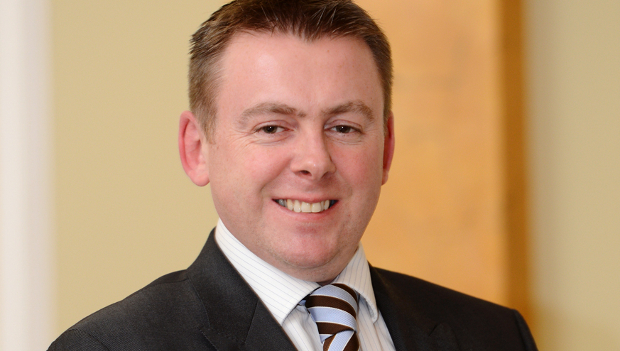Prof Fergal O’Brien is Deputy Director for Research at RCSI and Deputy Director of AMBER, the Science Foundation Ireland-backed materials research centre based at Trinity College Dublin. Here he talks to TechCentral.ie about the overlap between engineering and medicine and why academics have nothing to fear from commercialising their work.
As a student of engineering, where did your interest in biomechanics come from? Do you see it as an extension of, say, structural engineering?
I’ve always been interested in the workings of the human body and if I had not studied engineering, medicine would likely have been my choice. When I was in final year in TCD, I carried out a project studying the mechanics by which bones break.
Other people were studying the mechanics of other materials but I found this area fascinating and I knew immediately this was the area I wanted be in.
This project subsequently led to a PhD in the Dept. of Anatomy in RCSI (in collaboration with engineering in TCD). Since then I have been fortunate enough to span the fields of engineering and medicine in all areas of my professional life. I was the first engineer to teach human anatomy in an Irish medical school but a number of others have now followed in my footsteps.
As a Fulbright scholar with experience of studying in MIT and Harvard, what struck you about contrast between US and Irish academic cultures that made a career at home more attractive?
I learned a huge amount from my time in the US – most importantly perhaps that my time there raised my expectations and ambition in terms of the quality of research I wanted to carry out. Because of the fact I was a Fulbrighter, I had to return home in any case to fulfil the terms of the scholarship (there’s a two-year home rule condition).
As SFI had just been established in Ireland, I knew that there were major opportunities emerging at home and I was fortunate to become an inaugural recipient of the first SFI President of Ireland Young Researcher Award in 2004. This allowed me to establish the Tissue Engineering Research Group in RCSI and to transfer my experience from Boston back home.
Culturally, I love the US and I have many friends and a number of ongoing collaborations there. I’m probably in the US two to three times per year.
On the surface, biomechanics sounds like a field based on looking for cybernetic solutions. What kind of projects are being worked on at AMBER?
Our approach is to develop biomaterials which mimic the composition and structure of the native tissues in the body. These ‘3D scaffolds’ act as templates for tissue formation and encourage normal cell function. We believe that this approach is best in trying to develop solutions to alleviate problems with traditional techniques to replace diseased or damaged organs (eg artificial prosthesis and tissue grafting).
When I first established the lab, our focus was on fundamental research aimed at understanding more about how individual biomaterial properties (such as stiffness, composition and scaffold pore size) affected cell responses. We then used this information to develop individual biomaterials tailored for different applications. This was a slow process but I believe the right approach as it meant that we got the basic science and fundamentals right before applying it to tissue regeneration.
Securing funding an important endorsement of the work being done at AMBER. How difficult is it to establish relationships with industry and the EU?
In AMBER we have superb support staff who assist greatly in developing collaborative industry projects and in securing EU funding.
Together with the excellent outreach and public engagement team, this is probably the biggest benefit from a PI perspective to being associated with the Centre as it means that the PI’s time is used much more efficiently.
For example, the business development team will usually make the initial contact with the company (although as AMBER’s reputation continues to grow, many companies are actually contacting us) and the PI will only get involved when the relationship has begun to be established.
We then have a contracts unit to put agreements in place and when a project is up and running, there is a project management support team to ensure the project runs efficiently and to help with running meetings, preparing reports etc. It’s a brilliant system.
AMBER spinout Surgacoll Technologies is working on products requiring regulatory approval. Do you think this process is off-putting for researchers thinking of building a business out of their work?
A big difference between the biomedical sphere and the other areas that AMBER is involved with is that the regulatory requirements – which ensure the safety of devices for human use – are significant and require both major investment and a longer route to the market.
These are exciting times for SurgaColl. It has recently closed another funding round and the first product commercialised by SurgaColl, HydroxyColl, a collagen-hydroxyapatite bone graft substitute received regulatory approval (CE mark) in November 2015 and is currently in clinical use.
A second product, ChondroColl, a multi-layered scaffold for cartilage repair, is expected to receive regulatory approval in 2016 with human clinical studies to commence in the coming months.
However, it’s taken a lot of time, work and dedication by everyone associated with the project to get to this stage. While there will always be challenges, I think Ireland is in a better position now to streamline the process of spinning out companies that it was a few years ago, and we have a much more mature innovation ecosystem than even five years ago.







Subscribers 0
Fans 0
Followers 0
Followers